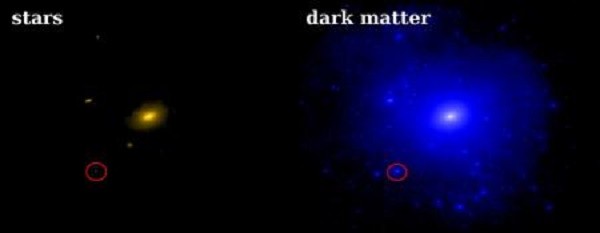Scientists have always considered dark matter as elusive, even if they outnumber visible matter in the universe, and the only way to detect dark matter is via the gravitational waves on galaxies.
Now, Evan Kirkby from the California Institute of Technology (Caltech) has detected a dwarf galaxy on the edges of the Milky Way that contains the highest concentrations of dark matter. This small and rather faint galaxy is called the Triangulum II, that is apparently composed of only roughly 1,000 stars. Kirkby then measured the velocity of six stars in this galaxy in the center which is located some 117,000 light years away.
In this new study, Kirkby revealed that these six stars were the only ones that were luminous enough to be observed by the Keck telescope, as he obtained measurements of the gravitational forces of the stars and the mass of Triangulum II. He says that the ratio of dark matter to the luminous matter in this galaxy is the highest ever recorded.
Kirkby also reveals that the total mass of dark matter found was extremely greater than all the galaxy's stars combined. This only means that there is a ton of dark matter that are densely packed that contributed to the galaxy's total mass, he adds.
Another remarkable thing about the Triangulum II is that it contains relatively smaller stars compared to the 100 billion stars in the Milky Way galaxy. Scientists also consider the Triangulum II as a "dead galaxy" since it no longer creates new stars.
The stars are also so faint here that it is similar to the faintest known galaxy in the universe called Segue 1. However, Kirkby and his team believes that this is the best target to understand dark matter signatures as Triangulum II contains special particles known as WIMPs or supersymmetric weakly interacting massive particles, that will destroy each other once they collide.
This collision will then create gamma rays that can be detected from Earth. These gamma rays in the universe are often produced by pulsars, originating from the farthest reaches of the universe. However, since Triangulum II is a dead galaxy, these gamma rays from dark matter particles could become visible, theoretically, says the team, leading to the confirmed detection and direct evidence of dark matter.
This new study is published in The Astrophysical Journal Letters.



























